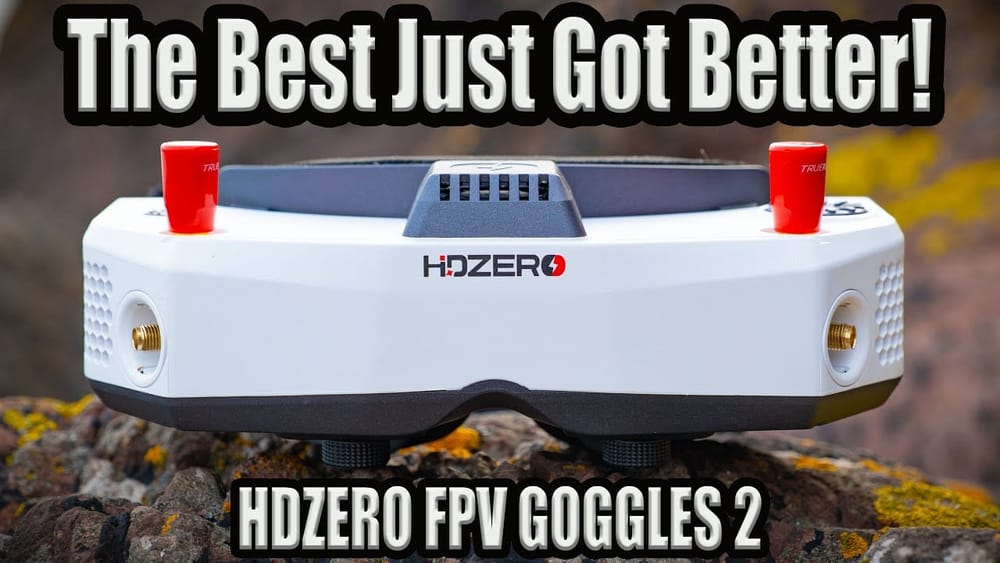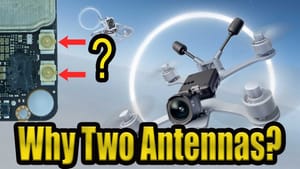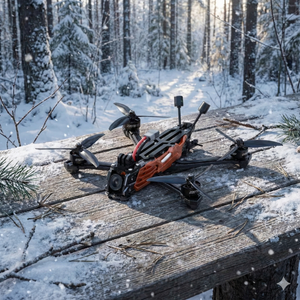
FPV pilots craving high-res digital goggles with analog fallback have a new contender: the HDZero FPV Goggles 2. Mads Tech puts these near-identical twins to the original HDZero Goggles under the microscope and finds plenty of internal upgrades worth noting.
TL;DR: HDZero’s second-gen goggles look almost identical externally but pack built-in analog FPV, Wi-Fi streaming, redesigned optics, and a revamped internal architecture. They keep all the original features while improving clarity, latency, and convenience. Analog pilots, digital racers, and content creators alike get a versatile, no-nonsense set of goggles that still set the bar for features and compatibility.
Unboxing and First Impressions: Don’t Judge by the Shell
At first glance, the HDZero Goggles 2 look like a carbon copy of the original. The moulding, IO ports, and overall silhouette are unchanged. Yet, subtle colour tweaks—from gray to a metallic black/gray plastic—hint at something new. A welcome addition is a carry case, missing from the first batch, which adds practical value for pilots on the move.
Inside the carry case, the goggles sit snugly alongside familiar accessories: two face mask foams (for different face shapes), a thick HDZero strap, power cable, stickers, cleaning cloth, and a firmware update cable for VTXs. The inclusion of two face masks echoes the original’s thoughtful approach.
Optics Overhaul: Bigger Heat Sinks, Sharper Corners, Less Dust
The optics are where the biggest internal revamp shows. HDZero ditched the round, open modules for fully enclosed, square optical units with substantial heat sinks. This redesign prevents dust ingress—a notorious enemy of FPV optics—and improves edge sharpness dramatically. The panels remain 1080p OLED with up to 90Hz refresh rate, but the new optics extend the focus range from +2/-6 to +4/-7, letting pilots dial in their vision more precisely.
Furthermore, the new focus and interpupillary distance (IPD) controls have a satisfying click, improving positional stability compared to the softer adjustments on the original goggles. This upgrade alone enhances the experience for pilots who obsess over perfect image clarity.

Expanded IO and Built-In Analog Receiver
The goggles retain the original’s rich IO: HDMI in/out, SD card slot for DVR, analog AV input, headphone and mic jack, head tracking output, and firmware update port. The HDMI input supports up to 100fps, overclocking the 90Hz OLED panels—a neat trick carried over from the first version.
Big news: analog FPV receiver is now integrated on a single antenna input, located at the top left antenna port. This high-sensitivity module supports Carl Laufer’s zero-latency 2D deinterlacer, which cleans up analog video without adding lag. While it’s not a multi-antenna diversity receiver like RapidFire, pilots can still add an external module via the side bay if they want signal combining.

Wi-Fi Streaming: Sharing the View with a Lag
Another fresh feature is built-in 2.4GHz Wi-Fi, allowing pilots to stream their FPV feed live to smartphones or tablets. The setup is straightforward: enable the Wi-Fi module in the menu, connect your device to the HDZero SSID (password “DiviMath”), and use a media player like VLC to view the stream.
Beware: this stream is not real-time. Expect a 2-3 second delay, making it useless for piloting but handy for sharing footage with friends or for monitoring purposes.

Software and Menu System: Linux-Based Flexibility
The goggles run an open-source Linux OS that offers extensive configurability. Pilots can scan HDZero channels, switch between sources (HDZero digital, built-in analog, HDMI in, external analog), and tweak image settings like brightness, saturation, and contrast.
The on-screen display (OSD) is fully adjustable in position and content, and the DVR supports recording on all inputs—including HDMI, a feature added post-launch via firmware update. DVR formats include MPEG-4 and TS, with the latter allowing recovery of files if the goggles lose power mid-recording.
Head tracking is built-in with a six-axis sensor, configurable for centre calibration and max angle limits. There’s also ExpressLRS backpack support, fan control, power options, and a sleep mode to conserve battery during downtime.
Latency and Digital Performance: Low and Fixed
HDZero’s digital FPV modes remain the star attraction. The goggles support all HDZero modes, including 1080p at 30fps and ultra-low latency 540p at 90fps. The latter, especially with the Nano 90 camera, delivers latency as low as 14ms full-frame and 1ms first pixel—comparable or better than many analog setups.
Unlike DJI or Avatar HD systems, HDZero’s latency is fixed, not variable. This predictability appeals to racers who prize consistent timing over image recovery tricks that add jitter. While HDZero doesn’t match DJI’s image quality or penetration, it dominates in size, weight, and latency.

Analog Testing: Surprisingly Solid Built-In Receiver
Field tests show the built-in analog receiver performs impressively well for a single antenna module. It handles typical interference and obstacles with minimal flicker and comparable or better colour fidelity than a SkyZone O4X diversity setup with larger antennas. For 95% of pilots, this receiver will suffice without needing an external diversity module.
This convenience eliminates the bulk and hassle of side-mounted analog modules. Yet, for those who crave every last bit of signal robustness, the external module bay remains available.

Teardown: Internals Redone from the Ground Up
Despite the familiar exterior, the HDZero Goggles 2 are a clean-sheet redesign inside. The optics modules are larger and fully enclosed, mounted on a new bottom shell. The top shell also differs, accommodating new PCBs.
All circuit boards are new: the main board sports a larger FPGA and a Wi-Fi chipset with an optional external antenna connector. The power board adds a diode or resistor absent from the original. The RF board combines HDZero digital and analog analog inputs, featuring a SAW filter for analog signals.
A built-in battery for clock backup is now standard, improving timekeeping and settings retention. The modular design remains, but the new boards prevent swapping parts between versions 1 and 2.

Conclusion: The Best Just Got Better
The HDZero FPV Goggles 2 improve on their predecessor in every meaningful way. The optics are sharper and more dust-resistant. The focus and IPD controls feel more precise and stable. Built-in analog FPV and Wi-Fi streaming add convenience without sacrificing flexibility.
These goggles remain the Swiss Army knife of FPV viewing: supporting HDZero digital, analog, HDMI inputs, and external modules. They hold the latency crown in digital FPV, offer comprehensive DVR functionality, and cater to racers, freestylers, and whoop pilots alike.
While not revolutionary, the upgrade is a solid evolution that leaves little to complain about. Compared to analog-only goggles like the SkyZone O4X at similar price points, the HDZero Goggles 2 offer more features, better analog performance, and digital versatility.
For pilots seeking a single goggle solution that covers all bases, HDZero’s second iteration is hard to beat.

FAQ
Can I upgrade my original HDZero Goggles to add analog and Wi-Fi?
No. The internal redesign means the new boards and optics won’t fit the original shell. You’ll need to buy the new goggles for built-in analog and Wi-Fi.
Does the built-in analog receiver support diversity?
No. The analog receiver uses a single antenna input. Diversity requires an external module plugged into the side bay.
What latency can I expect on HDZero digital modes?
The Nano 90 camera mode offers full-frame latency as low as 14 milliseconds and first pixel latency near 1 millisecond, among the lowest in digital FPV.
Can I record HDMI input on the DVR?
Yes. Firmware updates added HDMI DVR support, recording up to 1080p 60fps in H.264 or H.265 formats.
How good is the Wi-Fi streaming feature?
It streams live FPV video to mobile devices but with a 2-3 second delay, unsuitable for piloting but useful for sharing views.
Takeaway Box
- HDZero Goggles 2 keep the original shell but overhaul optics, boards, and features.
- Built-in analog FPV and 2.4GHz Wi-Fi streaming add convenience without external modules.
- New optics improve edge sharpness and dust resistance; focus and IPD controls feel more precise.
- Latency in digital modes beats many analog and digital rivals, with fixed, predictable timing.
- Firmware enables DVR on all inputs, including HDMI, with audio recording and TS file recovery.
This article was based from the video HDZero FPV Goggles 2 Review - Still The Best FPV Goggle ?




